| Volume 35 #2 | September/October 2018 | |
This seems to have been a long and eventful summer! From gardens exploding with the record warmth to tours of eastern Canada to European bike-and-barge trips, folks have been enjoying their summer time. I don't know about you, but I'm ready for a break! And with these cooler temperatures, it feels like it's time to start dancing.
How about a class (or two)? As you can see from the Calendar, classes are starting up this month all over. In fact, pay particular attention to the locations and times of otherwise familiar classes -- things have changed!
The biggest change is probably the new time for Linda Mae's Friday class (7:00PM), alternating between two new venues: St Lukes Episcopal Church and the Hazel Dell Grange.
Please note, also, that there is no longer a Thursday class.
Be sure to check out the Classes web page for full details.
Happy Dancing!
This is the sharpest that Sasquatch has ever been photographed.
|
|
We will soon celebrate ten years as a branch of the Royal Scottish Country Dance Society. The "RSCDS Southwest Washington State Branch" was formed September 20, 2008 and became a Washington nonprofit corporation and IRS tax exempt organization January 2, 2009.
The Branch actually has a longer history, having been formed from the earlier RSCDS Affiliated Group named the "Vancouver USA Scottish Country Dancers," which was founded in 1984 by Marge and Fred van Nus. Familiar names who were also involved at the beginning are Sally Bledsoe and Lisa & Kevin Scott. The Vancouver group partnered with dancers in Kelso in order to support activities in both locations.
The Branch almost had the name "Mt St Helens Branch". The Vanc-USA SCD 2008 AGM approved the decision to form an RSCDS branch, with the name "Southwest Washington State Branch" written into the initial constitution. A motion to name the branch "Mt St Helens Branch" was voted and was tied at 7 to 7. The motion therefore failed and the name remained "RSCDS Southwest Washington State Branch" as written.
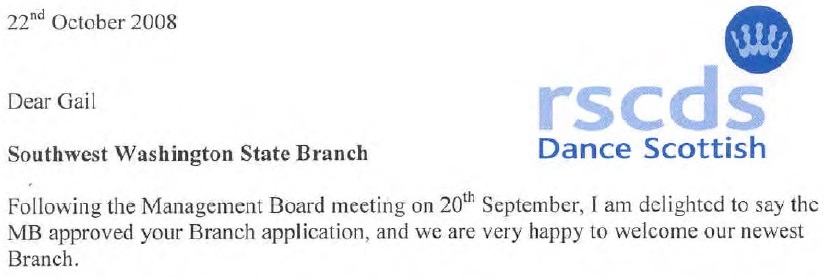
Branch Acceptance Letter
Our little journey began earlier last year when we had a discussion about the lack of traditional music to be found and experienced during our trip to Scotland the summer of 2016. One of our memories from our stay at the Salutation Hotel in downtown Perth was a wee pub we visited across the street. Though the interactions and culture were much as we expected to experience there, the kind of music that was performed was John Denver and Randy Newman! Quite disappointing to American ears wanting to at least feel like we had escaped from home for a little while.
How to make that happen? I considered and in fact reserved an apartment for two weeks in Glasgow, Scotland and a rental car just to ensure a foothold with the idea of driving out to various places using our flat as a home base. I continued to research this and was reminded that Scottish culture had suffered during the beginning of mass media during the BBC era and many musicians and tradition bearers had been lost during WWI and WWII, especially from the Highland areas. Though traditional music can be found, it is often spread out geographically into areas difficult to reach from the city during a day. Not to say that a return trip might not happen, at least this time it didn't seem to make as much sense.
I had learned about the history of Cape Breton and wondered if that would be a more efficient means of finding traditional music currently. I knew that there was a pub in the Mabou area called the Red Shoe owned by
a Canadian family musical group called the Rankins that had long history on the island going back to the seventeen or eighteen hundreds from Highland Scotland. Here's an example of the sound that made them
popular in Canada.
https://www.youtube.com/watch?v=XF5g6ajFGr0
After all that and watching dances and musicians local to the area on the Internet, many of them performing at the Red Shoe during their active months, I decided that we would set sail for Mabou, Cape Breton
right in the heart of it all.
This was one of the best travel decisions ever made. We found Cape Breton to be more Scottish than Scotland itself in most areas of Cape Breton but for the Acadian French part from Cheticamp north along the west coast towards the Cape Breton Highlands national park. Even in Cheticamp itself, a pub called The Doryman often has Scottish music playing in the evenings. In addition to dual language Gàidhlig and English signs found everywhere, there are Scottish placenames galore such as Inverness, Dunvegan, Dingwall, Iona, etc. We by tradition will attend local services where possible, and in this case we attended services in Judique at St. Andrews Catholic Church and where there was a description of something or a name for something written in English in the sanctuary, there was a Gàidhlig name for it with the Gàidhlig taking prominance. We stumbled across a wee tongue in cheek sign on the way north to our B & B in Mabou which said, "Jigs and Reels Lane." It took us about four trips past that to remember to capture that one. On top of all, this was close to one of the most beautiful places we've visited in Canada itself. It was food for the soul indeed.
One of the pre-arranged events was a meetup with Angus MacLeod, a man who teaches at the Gaelic College in St. Ann's college, for a Gàidhlig conversation. There were a couple of scheduling snafus to work through but eventually an appointment was made to meet at a restaurant west of Baddeck called "The Herring Choker", yes, "The Herring Choker." All humor aside, this restaurant has a (well deserved) reputation as providing the best food in the area. Angus had with him two ladies, one of them who is 101 bliadhna a dh'aois 101 years old who is originally from Assynt north of Ullapool in Scotland's northwest coast. Her daughter in law was with her as well. She has a wee bit of Gàidhlig left yet but it has rather leaked out over her years in Canada and as she puts it, "It's hard to understand the schoolbook Gàidhlig that so many have these days." I commiserated with her as though there have been a number who have called me fluent through the years, I well know I speak with an awful mix of an Oregon accent with bits from the Isle of Harris thrown in for good measure. Having said that, the ladies enjoyed my interactions with Angus. The older lady I was sitting next to had an interesting tale of going back to Assynt in the 1980s and being welcomed back home as a long lost relative though even at that time she had been away from Scotland for decades. It reminded me of a similar scene set in the Book "No Great Mischief" written by a fellow Caper and author, Alasdair MacLeod.
In addition to also visiting the Gaelic College, we visited The Highland Village (museum) in Iona, another small town in Cape Breton that has a place name from Gàidhealtachd regions in Scotland. It was interesting to see the physical history of Highland settlers on Cape Breton but I must admit to a certain disappointment with the presenters. They only had a limited amount of Gàidhlig, just enough to give their presentations some flavor but when I attempted conversations with them, my "schoolbook Gàidhlig" outstripped theirs often within a minute. However, a presenter in the house that was built a generation or so past in the 1800s had a bit more and explained some of the local flavor on the Gàidhlig in the area, for example, an "l" sound is often replaced with a "w" sound.
One of the last major events we visited was a family square dance in West Mabou, Saturday night. People from all ages attend this, mostly locals though there were a few of us tourists there, a few from our B & B
and ourselves. Now for those readers who thinks a square dance means something like you might have experienced in grade school or you've attended one locally, what Capers call a square dance is rather different. It
is more like an Irish ceilidh dance with the admixture of step dancing. A couple of poor quality videos that I took on my cell phone of that can be seen here:
https://www.youtube.com/watch?v=yEeKLoFRI9M
https://www.youtube.com/watch?v=Esgi3QRbFuo
https://www.youtube.com/watch?v=wMxMCw2EOlc
As below, some photos of our travels.
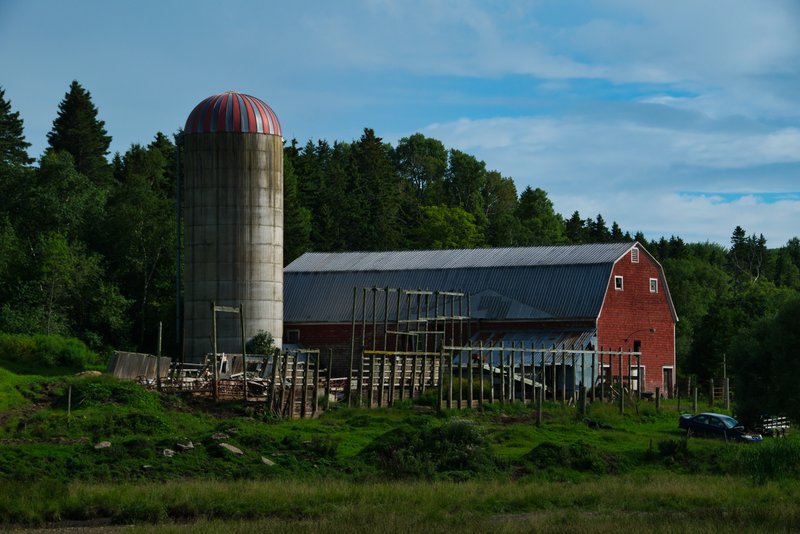
|
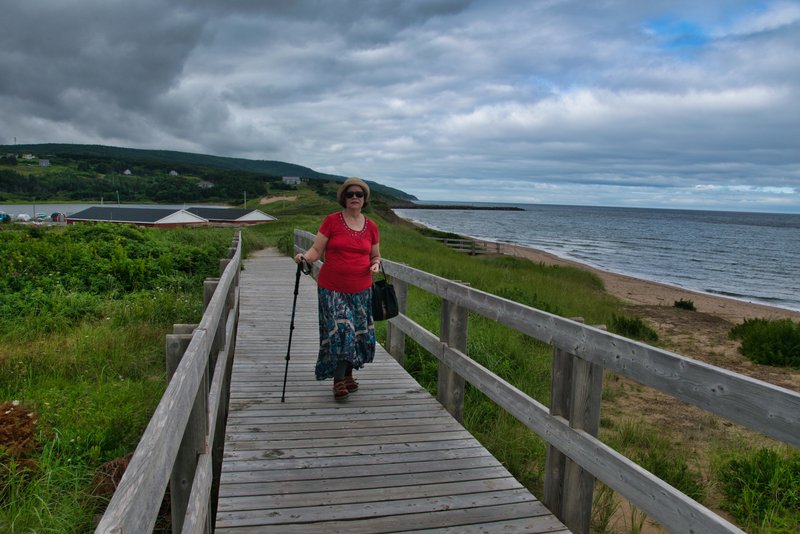
|
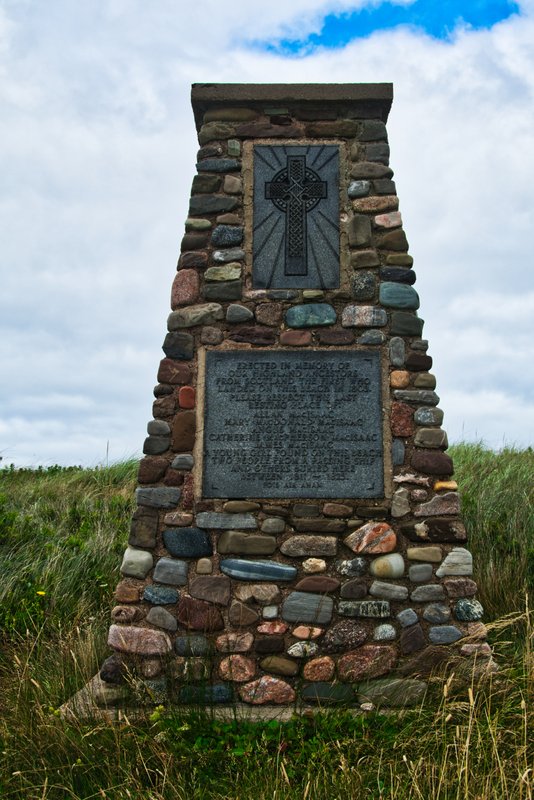
|
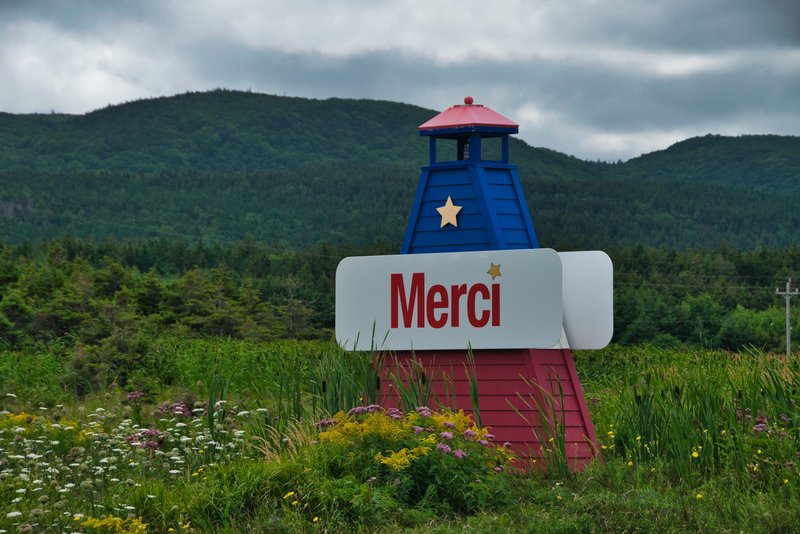
|
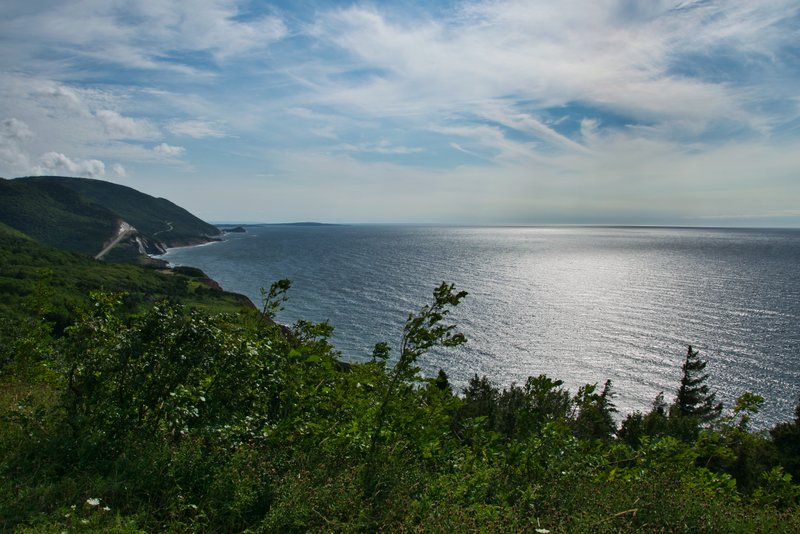
|
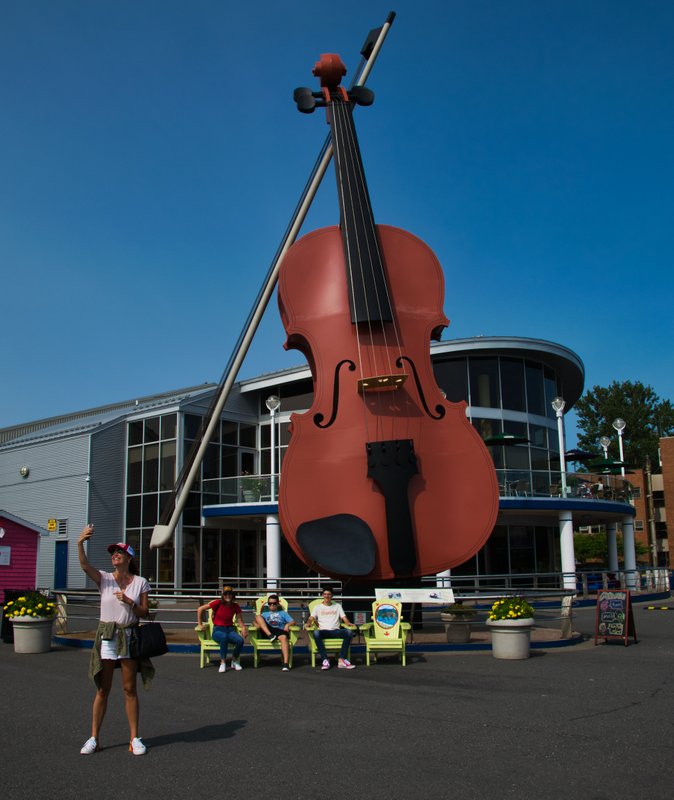
|

|
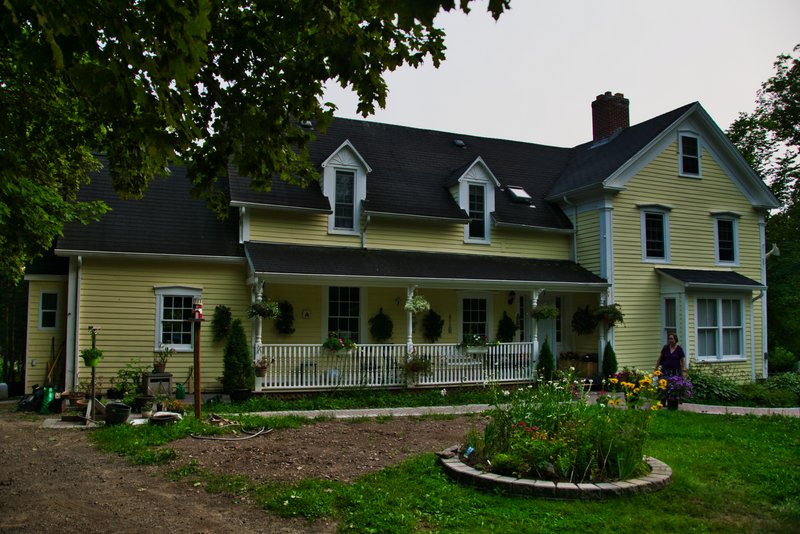
|
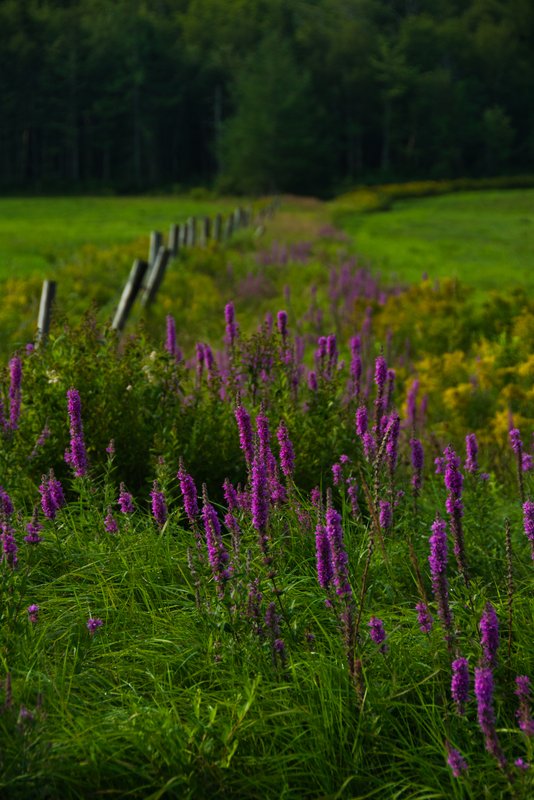
|
I viewed a TED Talk video titled The first 20 hours -- how to learn anything by Josh Kaufman, and applied the four steps to learn the Scottish dancing skill.
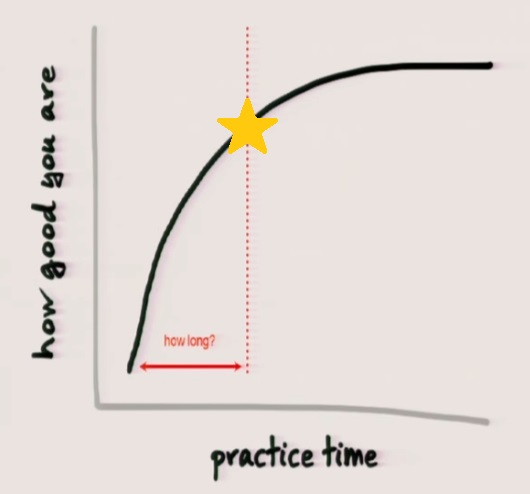 |
The TED Talk began by observing that it takes 10,000 hours, which is around 5 years of a full-time job, to reach expert-level performance. However with only 20 hours of focused practice, we can rapidly become good at performing any skill.
The speaker outlined the four steps to rapid skill acquisition in order to practise intelligently and efficiently, to invest 20 hours in the most effective way possible. He then demonstrated how he applied the steps to learn to play the ukulele.
1 Deconstruct the skill
Identify exactly what you want to be able to do when you are done, and break down the skill into smaller pieces. Decide which pieces are more important, then practise those first.
"Most of the things that we think of as skills are actually big bundles of skills that require all sorts of different things. The more you can break apart the skill, the more you're able to decide what are
the parts of the skill that will actually help me get to what I want? And then you can practise those first. If you practise the most important things first, you'll be able to improve your performance in
the least amount of time possible."
2 Learn enough to self-correct
Learn just enough that you can practise and self-correct as you practise. Learning becomes a way of getting better at noticing when you are making a mistake, then doing something different. This helps to avoid procrastination.
3 Remove practice barriers
Eliminate distractions like television, the internet, things that get in the way of doing the work. Use a little bit of will power to remove the distractions.
4 Practise at least 20 hours
Most skills have an initial frustration barrier. We don't like to feel stupid. Committing to practise 20 hours overcomes the frustration barrier, to stick with the practice long enough to reap the rewards. The major barrier to
skill acquisition isn't intellectual -- it's emotional.
 |
Let's apply the steps to learning the Scottish dancing skill in classes.
1 We can deconstruct the skill into four areas:
Learn the five footwork steps. Practise sufficiently to avoid
forming bad habits which are challenging to unlearn.
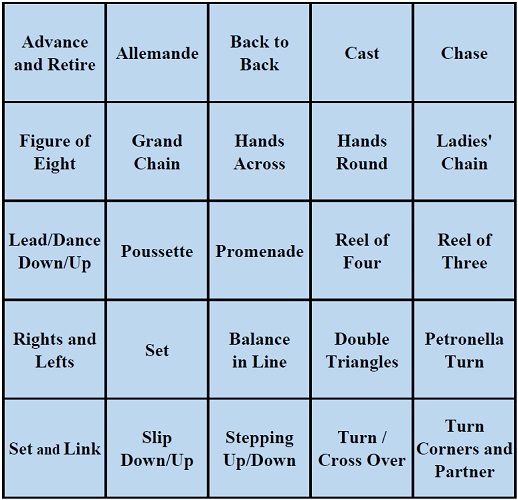 |
Learn 25 frequent formations that are components of a dance, amongst those listed here:
http://my.strathspey.org/dd/formation/
Learn phrasing: the ability to dance the steps in time with the music and perform a formation within the defined phrase of music and to transition smoothly from one formation to the next; and covering: awareness of our position relative to the other dancers, in order to synchronize matching movements and clearly define the pattern of the dance.
Learn dancing with the entire brain: intellectual and emotional.
We want to invest maximum time moving to get the feeling of the dancing skill. Focus on the leading and supporting dancer roles while learning a dance. Learn how to retain 32-bars of four 8-bar formations in our short-term memory.
2 The dance classes give us an opportunity to practise and self-correct as we practise. We expect to make mistakes. Learning how to recover from a mistake is a useful skill; dancers feel they are growing and want to continue learning.
3 Form a routine to attend the dance classes to learn the dancing skill, and have fun interacting with our fellow dancers.
4 Embrace the growth mindset and know that we expect to feel uncomfortable to learn the new skill at the beginning. Fear of feeling stupid or looking stupid is a significant reason why over 95 percent of the public do no dancing of any kind. Let's learn Scottish dancing -- it only takes 20 hours.
A trip down memory lane, remembering old friends fondly.

|
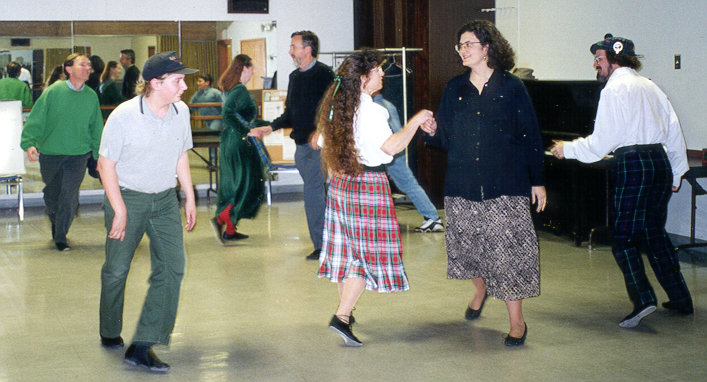
|
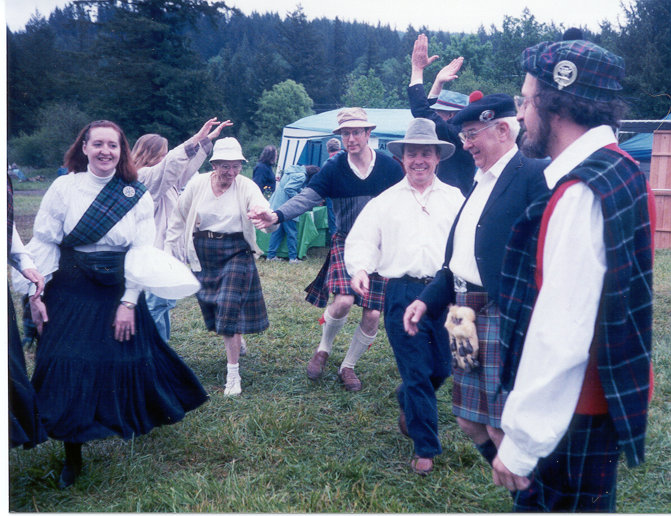
|
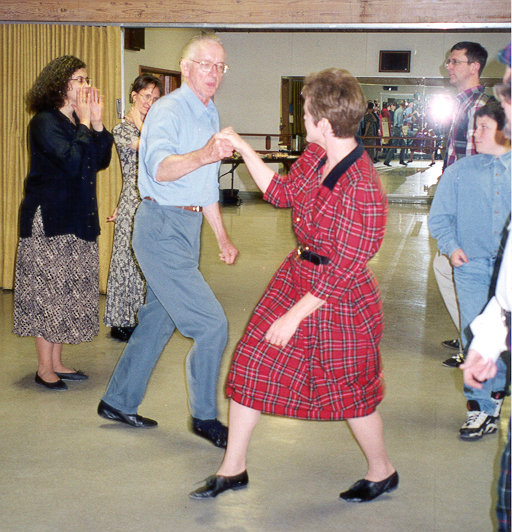
|
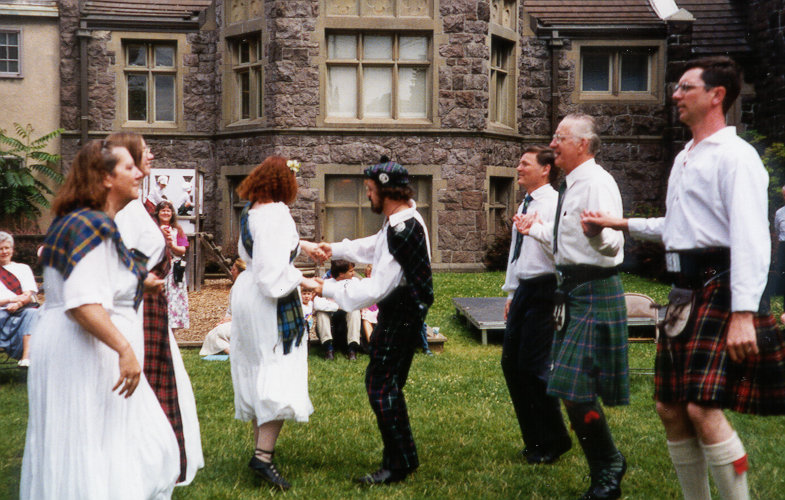
|
In August the SWWS Branch Board surveyed members about their experience and suggestions regarding Branch classes and other activities. Many thanks to nineteen Branch members
who answered the online survey. We can read the results at:
http://www.rscds-swws.org/meetings/2018-09-15/99-Report-2018-Survey.pdf
Twelve Branch members gathered for the August 11 potluck dinner and brainstorming meeting at the Halpenny home. The facilitator handed out a summary sheet of survey results, organized according to:
What we already do well, What is important to dancers, What affects class attendance, What we could do better/differently, Recruiting new dancers, and Revenue source ideas. We can read the summary at:
http://www.rscds-swws.org/meetings/2018-09-15/99-Survey-Results-Summary.pdf
Participants reviewed the survey results and worked on areas for improvement. Three main topics were developed during the meeting:
• What do we want our Branch to be?
• How to improve the SCD experience for current dancers?
• How to attract new dancers?
Participants selected seven actions to do better/differently, and twelve actions to attract new dancers, and assigned owners to the actions. We can read the meeting notes at:
http://www.rscds-swws.org/meetings/2018-09-15/99-Brainstorming-Session-Notes.pdf
The survey and brainstorming meeting were a team effort amongst the Board and members. Susan Shaw and Cynthia Soohoo composed the survey questions and operated the online survey and summary application. John Shaw circulated the survey and coordinated participation for the potluck dinner and brainstorming meeting. Liza Halpenny facilitated the brainstorming meeting and captured input on flipcharts. Tom Halpenny recorded notes and circulated summary notes to participants and this newsletter item. Thank you, members, for your valuable survey input and for coming to the meeting and sharing your excellent ideas!
To all dancers: giving and receiving feedback and ideas is an ongoing process, so please feel free at any time to share your concerns or suggestions with your teacher or a Board member. It takes all of us to make our Scottish Dance community great.
RSCDS HQ requested that branches provide a list of dances which are popular amongst dancers, in order to receive input for the 2019 book of 30 popular dances. Our Branch leaders had a
discussion of its popular dances. We generated a frequency-sorted list of dances in programmes (April 2010 - June 2018) which can be viewed here.
http://www.rscds-swws.org/meetings/2018-09-15/c-08-SWWS-Popular-Dances.pdf
We observed the issue that the programme devisers influence the frequency of dances but not necessarily the popularity of dances, but the list of dances was a good starting point to stimulate the discussion.
Our list of popular dances is:
Delvine Side
The Reel of the Royal Scots
Da Rain Dancin'
Follow Me Home
Hooper's Jig
Shiftin' Bobbins
The Cranberry Tart
The Australian Ladies (does not appear on any programme)
I am also interested to learn the reasons why a dance is popular, and I observed a significant reason. The dances all have interesting choreography, but a quality that really helps the popularity is excellent music that accompanies the dancing. A popular dance has great music that plays in our mind after we have danced. Therefore, we expect that an electronic music publication that accompanies the 30 popular dances book will have close to thirty inspiring music tracks.
An issue is that there exist regional preferences for music, related to two distinct cultures of preferred Scottish dance music instrumentation: accordion band and fiddle & piano. Our branch is located in an area of North America where fiddle & piano is preferred, where the typical line-up of live music is the fiddle & piano band. RSCDS will be challenged to record an electronic publication that will generate high customer satisfaction for both markets.
I researched accordion and fiddle & piano music clips for the Branch's list of popular dances. We can listen to the music clips in the following table. Which column of music do you prefer? The answer probably depends on the preferred Scottish dance music culture where you dance.
| Dance Name | Accordion | Fiddle & Piano |
| Delvine Side | Bobby Crowe and his Scottish Dance Band; RSCDS Book 2; 09 Delvine Side Clip | Fiddlesticks & Ivory; Ghillies On the Golden Gate; 02 Delvine Side Clip |
| The Reel of the Royal Scots | Neil Copland and His Scottish Dance Band; RSCDS, Leaflet Dances, Vol 2; 08 Reel of the Royal Scots Clip | Commonwealth Ceilidh Band/Bay Ladies Ceildh Band; Dances Frae the North, Vols 1, 2, 3; 10 Reel of the Royal Scots Clip |
| Da Rain Dancin' | No recording | Keith Smith & Muriel Johnstone; Delaware Valley; 01 Da Rain Dancing Clip |
| Follow Me Home | RSCDS; Scottish Reflections; 05 Follow Me Home Clip | Keith & Muriel Johnstone; Delaware Valley; 11 Follow Me Home Clip |
| Hooper's Jig | Jimmy Shand & His Band; A Scottish Fancy; 07 Hooper's Jig Clip | Keith Smith & Muriel Johnstone; Delaware Valley; 06 Hooper's Jig Clip |
| Shiftin' Bobbins | Colin Dewar; Special Requests Vol 1; 07 Shiftin' Bobbins Clip | Green Ginger; Gang on the Same Gate; 05 Shiftin' Bobbins Clip |
| The Cranberry Tart | No named tune | Donaldson, Knight, Gordon; First Stop! New Sets for Scottish Country Dance; 02 8x32 Jigs Clip |
| The Australian Ladies | Colin Dewar; Special Requests Vol 6; 01 Australian Ladies Clip | Keith Smith & Muriel Johnstone; Campbell's Birl; 12 Australian Ladies Clip |
Calendar of Events | ||||||
|
|